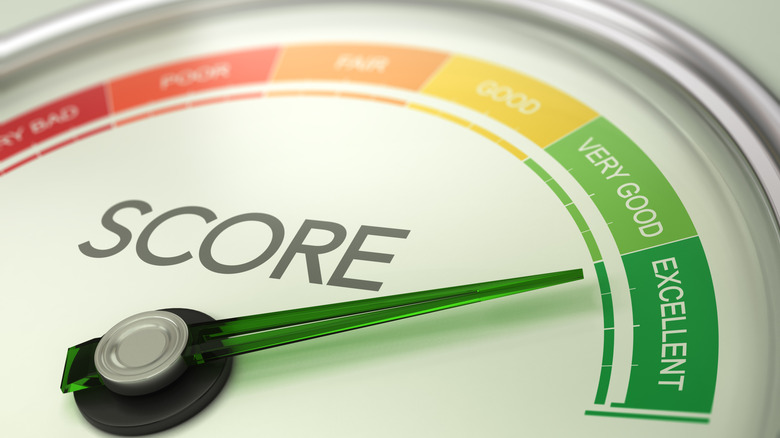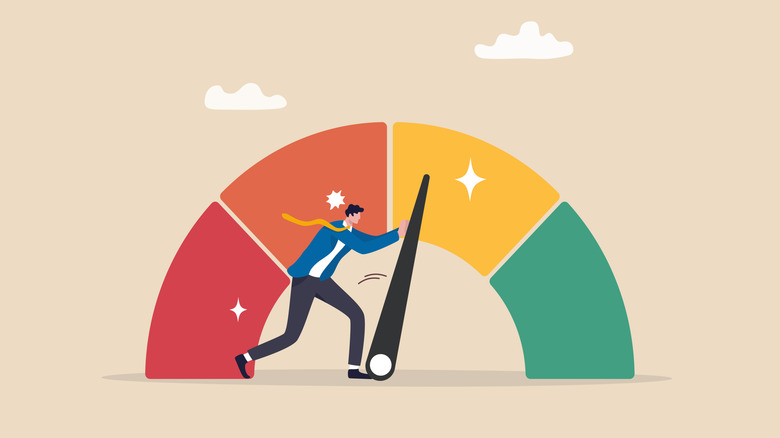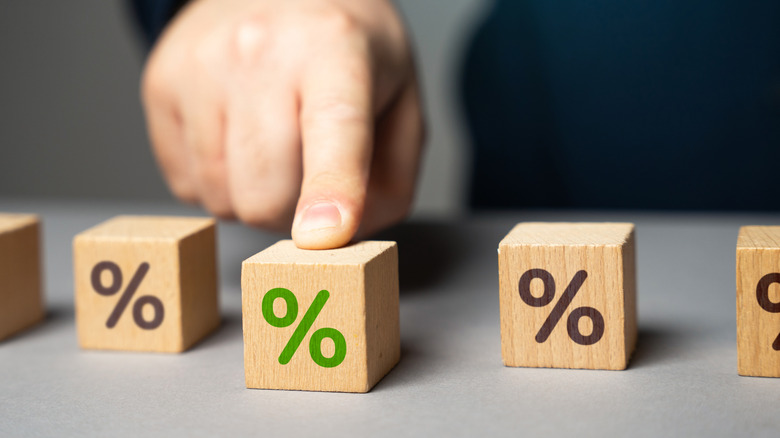Once You Hit This Credit Score, You'll Unlock The Best Mortgage Rates
Mortgage lending is a complex equation. Borrowers bring a kaleidoscope of information to the table, and then hope for the best with their lending partner. In some cases, the approval process is quick. For example, if you've been saving for a few years, have little debt, and a great credit score, you're unlikely to see many hurdles standing between you and your new home. However, things can get tricky when other financial obligations come into the picture, such as a pile of student loans you're thinking about aggressively paying off or credit card balances that you haven't been able to eliminate.
There are two features of the mortgage application that debts and other financial obligations influence. The first is your Debt-to-Income ratio (DTI), or the percentage of your salary spent on servicing debts. An unhealthy DTI figure is the primary cause of denials among homebuying hopefuls. A DTI of 45% is generally the hard cap for flexible lenders, while below 35% is more advantageous. Your credit score is also impacted by all the financial obligations in your life and can be a significant force for change when it comes to your interest rate. Bad credit can affect you in many ways, and one of them is that it can affect the cost of borrowing for your new home. Generally speaking, you'll need a 620 for mortgage eligibility, but you'll face the worst rates available. On the other hand, if you can boost your score above 740, you'll get access to some of the best rates on the market.
An excellent credit scores can lower your costs
The best way to improve the interest rate of your mortgage loan, and therefore lower your total costs, is with a fantastic credit score. Tiers sometimes include a "very good" category, making the range span across either four or five labels — ranging from "poor" to "excellent". If you want the best rates, you'll need a score at or above 740, making your score either very good or excellent, depending on the specific score provider used.
Scores range from 300 up to 850, so naturally the higher you can drive your score the better your interest rate will become. Even so, changes will be felt in major waves between the 600s and 700s, and become smaller ripples as you cross into excellent territory and inch toward the high end of the scale. Of course, an excellent score isn't just a piece of data floating in a vacuum. If you've managed to build great credit you likely carry little debt, have a large available credit line — that you don't use the vast majority of — and have managed financial obligations well for quite some time. The factors that make for a high-end score indicate a consumer that's responsible and capable of continuing to successfully navigate their financial needs and obligations. This is what makes a higher score more appealing to would-be lenders.
The industry works in increments of 20
A small detail that many applicants might miss focuses on how the mortgage industry as a whole tends to operate when crunching the numbers. Since credit scores tend to operate in 20 point increments, you'll generally only see changes in your offered interest rates after at least a 20 point change in your credit score. This means that two applicants with a 741 and a 758 credit score, respectively, are likely to see the same terms reflected in their offer. On the other hand, an individual sporting a 761 will potentially get better rates than a borrower with a 759 credit score since this doesn't quite crack the next 20-point threshold.
Score simulators can often be found online or through your credit card issuer's account portal. These kinds of tools can be instrumental in planning an approach to haul your score over the next hurdle and gain access to improved interest rates. These kinds of simulation tools can take into account things like average and maximum credit line ages, total balances, and credit utilization rates. Tweaking the math on any of the factors can improve or weigh down your score can help you create a plan to achieve the score you might need ahead of a new mortgage loan application.
Small changes yield enormous effects
Instead of chasing small gains to your credit score, it might be tempting to simply apply for a loan if you know you're already in a great position to be approved. The draw of getting into your first home — or moving out of one that no longer suits your needs — can be strong. It's often hard to wait for conditions to change and/or circumstances to be overwhelmingly favorable when the grass is already fairly green. However, the wait can translate into enormous savings on your total repayment obligation. The difference between the average APR, in early 2025, for a borrower with a 760 credit score and a 660 score is close to 0.5%.
That seemingly tiny difference translates into average monthly payment figures of $2,746 versus $2,847. While $100 a month might not put much of a dent in your budget in the present, this additional cost builds up to a $1,200 difference over just the first year alone. That's enough for a much needed car repair or a retirement investment that will only grow with time. Expanded out over the typical 30 year term, this small difference in added interest will eventually snowball into a total housing cost that's more than $40,000 more expensive. Unless you're working with a desperate situation that can't be waited out, taking the time to improve your credit score with just a bit more work to get it over the next hump — or brought above 740 — will pay immense dividends long into the future.



